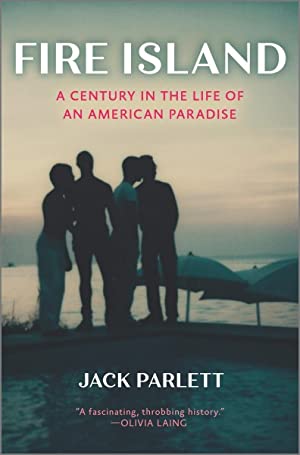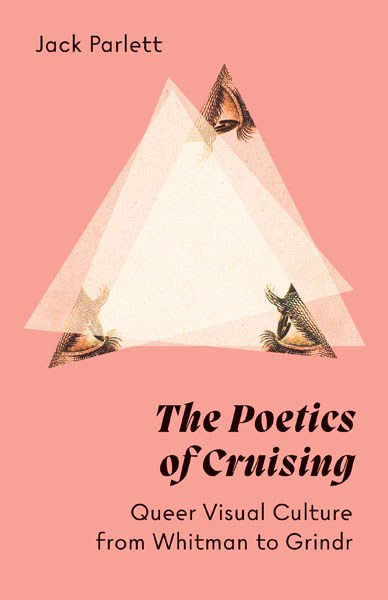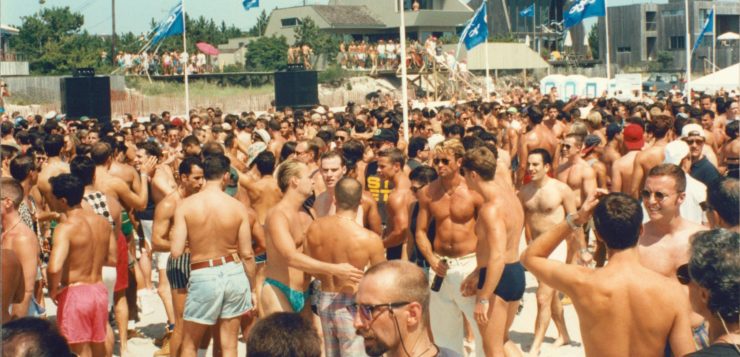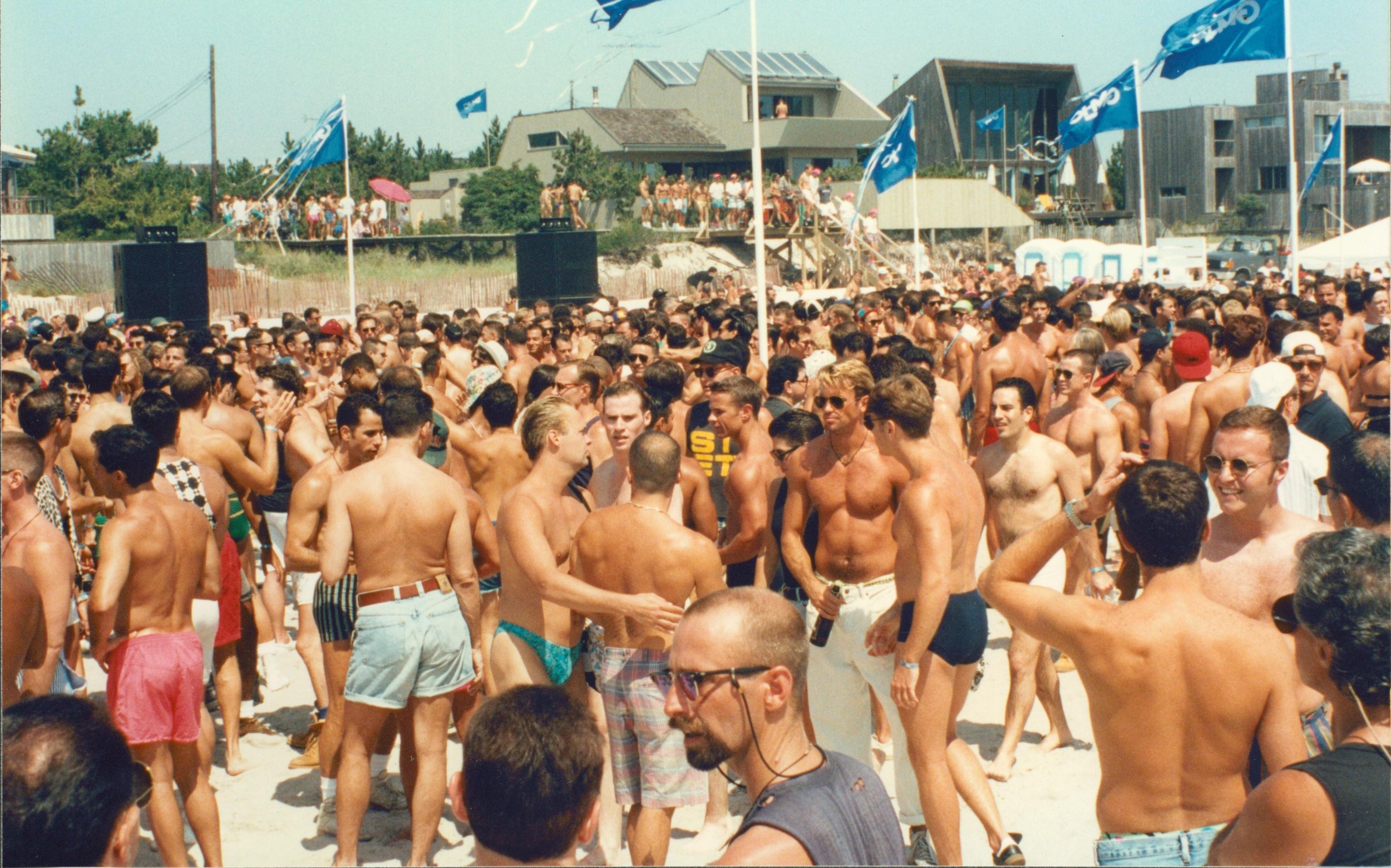 FIRE ISLAND
FIRE ISLAND
A Century in the Life of an American Paradise
by Jack Parlett
Hanover Square Press
266 Pages, $27.99
 THE POETICS OF CRUISING
THE POETICS OF CRUISING
Queer Visual Culture from Whitman to Grindr
by Jack Parlett
Univ. of Minnesota Press
233 pages, $27.
FROM THE AIR, Fire Island looks like a long, narrow sandbar keeping the Atlantic from the inner bays of south Long Island. While connected at its western end by a bridge to the state park, there is no highway, no thoroughfare of any kind, along its great length. A ferry ride of twenty to forty minutes is needed to arrive at any of the dozen or so settlements, and each community instantly presents itself as visually different and unique—which they all are, often in unexpected ways.
Jack Parlett’s Fire Island: 100 Years of a Gay Paradise presents the history in the form of literary portraits of writers and editors connected to either Cherry Grove or Fire Island Pines, the two gay communities in the center of that sunny sandbar. Parlett starts with the period 1882 to 1938 at Cherry Grove, from its beginnings through its bifurcation and near destruction by the great hurricane of 1938. Lesbian power-couple Natalia Danesi Murray and Janet Flanner (“Genêt” at The New Yorker) and Natalia’s son William (whose father was the cofounder of the William Morris Agency) are here representing the kind of casually ultra-private sophisticates who summered at the Grove, resulting in its early artsy or boho image. An anti-fascist Italian book editor, Murray helped in the democratic reconstruction of postwar Italy, building the Rizzoli media empire. Later, relocating in the U.S., she headed up Rizzoli America during its best years.
The next section, 1939 to 1969, focuses on writer Donald Wyndham and his partner Sandy Campbell, and then on W. H. Auden in Cherry Grove in the ‘40s, and on his singular relationship with Chester Kallman. Kodak photos show the poet, along with Christopher Isherwood and Stephen Spender, back together for the first time in over a decade, since their sex-filled German stay at pre-war Rügen Island. After World War II, gay and lesbian writers were all but trampling the sea-grape bushes of Cherry Grove. Edward Albee, Carson McCullers, Patricia Highsmith, et al., made the Grove an ongoing martini and scotch party. Fun and local scandal erupted. Those palmy and rather innocent years were ended by Frank O’Hara’s still not-well-explained death by sand-going beach taxi.
Oddly, the one section in that isn’t as satisfying as the others is 1969 to 1979, which the author calls the “Halcyon” years. Yes, they were, but if you go by Parlett, you might wonder why. Perhaps the problem is that, as the author himself admits early on, he believes that he would find himself physically unfit to be among all those men. (Not so.) Or perhaps it’s the authors he chooses to briefly illustrate his chapter. Edmund White and George Whitmore were never more than very occasional visitors in that period. Andrew Holleran was gone before halfway through the decade. Not one of them led what could be called very “Halcyon” lives there.
Instead, Parlett focuses on the Morning Party, a huge, public fund-raising event on the beach held for the F. I. Pines Fire Department. But those who were in the know knew that another, large, “private” Pines party a week later was the real event to be at, and also more typical, coming as it did after a decade of large, “private,” famous F. I. parties, titled “Fellini,” “Carmen Miranda,” “Egyptian,” “Star Wars,” “Peacocks,” and “Cockatoos.” This writer was picking blackberries on Midway Walk when my neighbor invited me. Guy, Duc de Rohan (“my ancestor crowned Charlemagne”) and his lover had split up so he needed a date, and this was a celebration. The lover got the adjoining house with a pool, etc. The night of the event, Gladys Knight and the Pips in silver lamé jumpsuits were helicoptered in as entertainment. The adjacent pools were boarded over to be a dance floor, and the diving boards built up to become DJ booths. The invitation read “Just Another Party.”
Felice Picano’s latest novels are the duology Pursuit: A Victorian Entertainment (2021) and Pursued: Lillian’s Story (2022).








